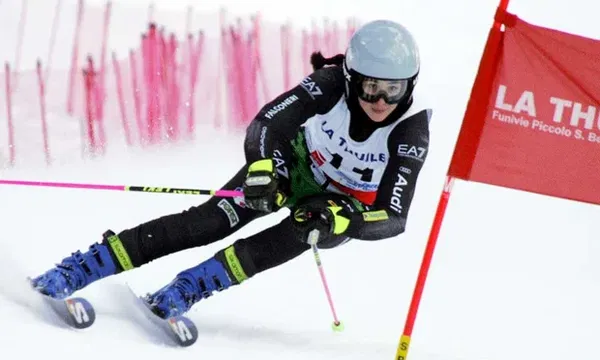

As winter coats the mountains in snow, snowboarding becomes a tempting adventure for many. But have you ever stopped to think about the risks involved? Snowboarding is undoubtedly thrilling, but did you know that even though snowboarders make up only 25% of ski area visitors, they account for nearly 50% of all injuries? It’s kind of wild when you consider it. What makes this sport so risky? Is it just the thrill, or do we underestimate the dangers? The snowboarding industry is worth $2.5 billion, with $310 million in gear sales, but at the end of the day, no amount of money can replace a life.
Watch What’s Trending Now!
The truth is the risks aren’t the same for everyone. Your experience, the terrain you’re riding, and even the weather can change the level of danger. While it’s comforting to know that the odds are in our favor, about four injuries for every 1,000 days of snowboarding, and the chance of death is 1 in 2.2 million, according to Snowbrains into 2022- how much should we really take those numbers for granted? Just recently, a young athlete tragically lost their life on the slopes. It really makes you wonder: can we ever truly calculate the risks, or are there just some things we can’t predict on the mountain?
ADVERTISEMENT
The snowboarding community is in shock as Sophie Hediger’s life ends so suddenly
Recently, the snowboarding community was shocked by the loss of 26-year-old Olympian Sophie Hediger, who died or rather was killed in an avalanche while free-riding in Arosa, Switzerland. Hediger, a member of the Swiss national snowboardcross team, was snowboarding on natural terrain outside a closed black diamond slope when the avalanche struck. She and a companion were on the slopes when Hediger left the closed area, and shortly after, the avalanche occurred. However, even when the companion was able to call the rescue services, Hediger was buried and found only several hours later. Unfortunately, the CPR was not effective, and hence, she succumbed.

ADVERTISEMENT
This is a tragic event that also reminds us of the dangers that are associated with snowboarding. Hediger, who had a great season in the 2023-2024 World Cup season where she achieved podium places such as a second position in St. Moritz and third in Gudauri, was not new to the risks that come with the sport. Before that, she had only participated in the Beijing 2022 Winter Olympics, where she was first exposed to the Olympics. It was a high ambition for Hediger because she aimed to ace the ski freestyle and snowboard world championships in Switzerland in March this year. But this isn’t the first death in these snowy mountains?
ADVERTISEMENT
Could Matilde Lorenzi’s death have been prevented?
Another case like this really hits hard was Matilde Lorenzi, a 19-year-old ski champion from Italy, who tragically lost her life. Back in October, when Lorenzi was training she had a fall on the Schnalstal Glacier in Val Senales. She was on the Grawand G1 slope when she hit her head on the hard piste and suffered a traumatic brain injury. Despite being airlifted to a hospital in Bolzano, she couldn’t recover. It’s so hard to wrap your head around how quickly things can change. One moment Lorenzi was on track for an amazing career, and the next, she was gone.
Top Stories
Prayers Pour In From Terrell Owens as 275lbs Former Cowboys Player Announces Major Health News

Dana White Cuts Former MMA Champ From the UFC, Again

NFL Make Final Punishment Decision on Controversial Patrick Mahomes Incident

Dan Campbell Loses Faith in Locker Room After Clearing Stance on NFL Officials’ Controversial Decision

Footage Surfaces of Florida Police Arresting NASCAR Veteran Over Disturbing Public Misbehavior

Praise Pours In for Annika Sörenstam After Her Gesture Toward Matt Kuchar and Son Despite PNC Loss

ADVERTISEMENT

Lorenzi was just getting started, and she was doing well for herself before she died. She was able to capture the Italian Super-G title for the 2023-24 season and came within the top 15 at the European Cup. She also competed for Italy in the FIS Junior World Championship in 2024 and came 4th in the Alpine Team Combine. There is no doubt she had much more potential to give. And if you believe that Lorenzi’s death is an exception, remember that at least 15 others have died on slopes in Colorado this ski season only.
ADVERTISEMENT
A look at fatalities in the 2023-24 Ski season
The deaths recorded during the 2023-24 ski season in Colorado amounted to at least 15, people with ages between 14 to 78 years. More disturbing is that out of these, six were due to impacts with trees, others due to medical complications such as heart attacks, and brain hemorrhages. A majority of these events occurred in intermediate or beginner terrain; slopes that we consider safe. For instance, a 43-year-old dentist from Kentucky died of a brain hemorrhage after a fall at Vail and a 14-year-old snowboarder lost his life in a crash on Keystone’s green territory. Unfortunately, these fatalities signal snowboarders, even those wearing safety equipment such as helmets, are in even the intermediate to beginner territory, regions that might be considered safe by many.
Here’s a breakdown of some of the reported fatalities from 16 Colorado county coroners: On January 2, 2024, 47-year-old Gavin Scott of Colorado Springs skied into the trees and died from a head injury at the bottom of Breckenridge’s Monte Cristo trail after taking a fall while snowboarding. Subsequently, on January 5, 2024, 53-year-old Stephen Kintigh from Frisco, died of heart failure at Copper Mountain, followed by 64-year-old Kenneth Riddle from Durango who died in a similar skiing incident at Purgatory. Eileen Sheahan who was 22 years of age, a student at the University of Michigan skied into a tree on January 27, 2024, at Aspen Highlands and died. What can be sadder than that?
ADVERTISEMENT
How to prioritize safety on snowboarding
When it comes to snowboarding, athletes might already have a good idea of the basics, but equipment is still important, especially as you move to more difficult slopes or freestyle riding. For instance, a helmet is crucial in saving one from head injuries, while wrist guards and knee pads are ideal in preventing common injuries such as fractures and sprains. However, if you find yourself in a more challenging situation or if you will take a higher level of risk, then there are a few other things that you may require.
A back protector is an efficient way of reducing the effect of impact and thus prevents back injuries, which may be useful if you are working on rails or large jumps in the park. When you are going off the beaten path or into the backcountry, then you have to consider yourself in danger of an avalanche. This entails carrying an avalanche beacon, a shovel, a probe, and maybe an airbag, which can be very helpful in case of a disaster.
ADVERTISEMENT
It is not uncommon for even experienced snowboarders to become aware of the place they are navigating. The type of slope, the condition of the slope, the weather, and the number of people using the mountain are some of the factors that may affect your safety. When you are in advanced terrains such as double black diamonds and the terrain park, exceed them to avoid injuries. Do not ride solo, do not go to the mountains without checking the avalanche report, and ensure that you have the right safety gear.
Snowboarding is not just the protection of the individual but also the responsibility of riding within a public space. Frequent collisions are a major danger to the slopes, and it is necessary to remember the peculiarities of behavior on the slopes, as well as the presence of other people, and adapt to the existing conditions. When slopes are thick with riders, slow down and avoid interfering with other riders. Always give the right of way to those downhill, and if you’re making unexpected moves, check behind you. Ultimately, snowboarding is about pushing yourself, doing what is smart, being attentive, and knowing when to slow down for your benefit and that of others. Knowing how to prepare, what equipment to use, and having an awareness of your surroundings will help make sure you’re not only enjoying the ride but being safe while you’re doing so.
ADVERTISEMENT
ADVERTISEMENT
ADVERTISEMENT

